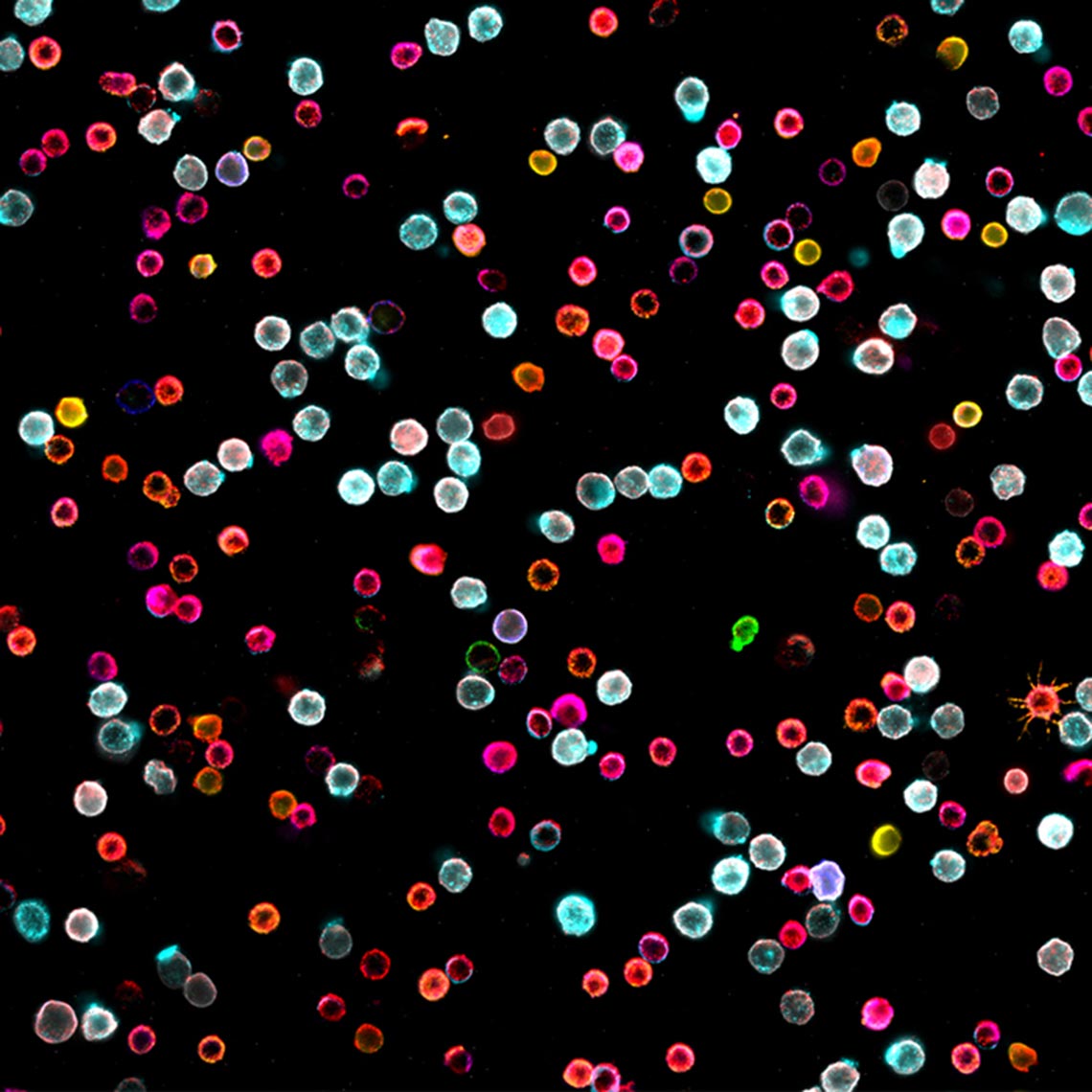Discovering and Phenotyping Rare Immune Cells
Quantification and spatial localization of key immune cell populations is invaluable to characterizing immune responses, evaluating immunotherapy treatment, and developing novel therapeutics. See how CellScape™ Precise Spatial Proteomics (formerly called ChipCytometry technology) has advanced immunology research by enabling deep and quantitative cell phenotyping.
Identification of Rare Cell Types
Dr. Tianqi Leng and colleagues at the University of Oxford explored the activation of mucosal-associated invariant T (MAIT) cells, an unconventional immune cell type found in the blood and the gut. They found that MAIT activation was linked to roles in both tissue repair and homeostasis.
MAIT cells are only identifiable by a pattern of six specific biomarkers, some of which are non-canonical immune markers. As Precise Spatial Proteomics is compatible with any fluorescent antibodies, the technology facilitates the integration of both established and esoteric biomarkers in a streamlined workflow.


Correlation of Tissue and Suspension Cell Analysis Methods
Joachim Hagel and the Klenerman laboratory at the University of Oxford explored both suspension cells and tissues from tonsil samples for structural organization and the presence of rare, innate-like T cell types.
In this study, they found a strong correlation between the results of rare MAIT cells detected in tonsil tissues via Precise Spatial Proteomics and suspension samples via flow cytometry. Notably, spatial analysis of tissue samples revealed an additional rare cell type found in close proximity to MAIT cells, demonstrating the power of phenotyping in situ.

CellScape Precise Spatial Proteomics
The CellScape platform offers the most versatile spatial biology solution – compatible with both off-the-shelf antibodies and our expandable VistaPlex™ Assay Kits.
Combining best-in-class image acquisition with easy-to-use fluidics for walk-away automation, CellScape accelerates biological discovery and therapeutic development.

Accelerate Your Immunology Research
Providing spatial transcriptomics with single-cell resolution, the CosMx™ Spatial Molecular Imager enables discovery of cell-cell interactions and characterization of immune cell heterogeneity.
Leveraging CosMx RNA and protein panels, this platform captures highly multiplexed spatial information to support cutting-edge research.